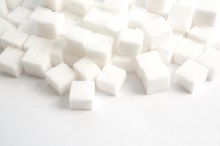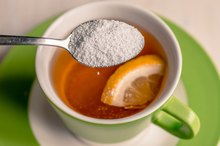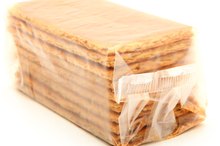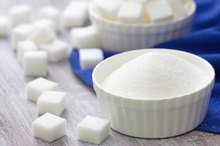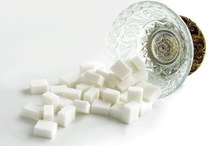The Effects of Brown Rice Syrup on Blood Sugar
Brown rice syrup is an alternative to refined table sugar and artificial sweeteners and is often included as an ingredient for many processed foods. To make brown rice syrup, brown rice is fermented to break down the starch in the grains, then the liquid is removed and heated until it reaches a syrup-like consistency. Two tablespoons of brown rice syrup contains 110 calories and 25 grams of sugar, so it should be consumed in moderation.
Glycemic Index
Brown rice syrup has a glycemic index rating of 98, compared to 64 for refined table sugar and 96 for pure glucose. The glycemic index, or GI, rates foods that contain carbohydrates from zero to 100 based on their effect on blood sugar levels.
Blood Sugar Effects
The Side Effects of Sucrose
Learn More
Brown rice syrup is made up of three percent glucose, 45 percent maltose and 52 percent maltotriose but don't be tricked by the names of these sugars. Glucose only makes up three percent of the total sugars which may appear to be beneficial but maltose and maltotriose are sugars made by linking two glucose and three glucose molecules respectively.
Brown rice syrup enters the bloodstream quickly and it's not recommended for common use for diabetics or those with trouble monitoring their blood sugar.
Benefits
Unlike refined table sugar, which causes your body to work harder to absorb the sucrose, brown rice syrup is able to provide your body with fiber, as well as 3 percent of your recommended daily intake of sodium and potassium. The slower absorption of the sugars also allows you to maintain your energy helping to prevent the negative effects of sugar including fatigue, irritability and the desire for more sugar.
Considerations
Foods Containing Glucose or Fructose
Learn More
Brown rice syrup is still highly processed, and like other high-calorie sweeteners, brown rice syrup can contribute to weight gain if used in excess. Also, arsenic has been found in brown rice syrup and food products sweetened with them.
Related Articles
References
- Ag Commodities: Brown Rice Syrups
- Glycemic Index
- Dartmouth University FAQ
- Kondo K, Morino K, Nishio Y, Ishikado A, Arima H, Nakao K, et al. Fiber-rich diet with brown rice improves endothelial function in type 2 diabetes mellitus: A randomized controlled trial. PLoS ONE 12(6): e0179869. 2017. https://doi.org/10.1371/journal.pone.0179869
- Abdulwaliyu I, Arekemase S, Adudu J, Batari M, Egbule M, Okoduwa S. Investigation of the medicinal significance of phytic acid as an indispensable anti-nutrient in diseases. Clin Nutr Exp. 2019;28:42-61. doi:10.1016/j.yclnex.2019.10.002
- Ravichanthiran K, Ma ZF, Zhang H, et al. Phytochemical Profile of Brown Rice and Its Nutrigenomic Implications. Antioxidants (Basel). 2018. doi:10.3390/antiox7060071
- Kondo K, Morino K, Nishio Y, Ishikado A, Arima H, Nakao K, et al. Fiber-rich diet with brown rice improves endothelial function in type 2 diabetes mellitus: A randomized controlled trial. PLoS ONE 12(6): e0179869. 2017.
- LEE J, SREENIVASULU N, HAMILTON R, KOHLI A. Brown Rice, a Diet Rich in Health Promoting Properties. J Nutr Sci Vitaminol. 2019;65(Supplement): S26-S28. doi:10.3177/jnsv.65.s26
- Lee YM, Kim SA, Lee IK, et al. Effect of a Brown Rice Based Vegan Diet and Conventional Diabetic Diet on Glycemic Control of Patients with Type 2 Diabetes: A 12-Week Randomized Clinical Trial. PLoS One. 2016. doi:10.1371/journal.pone.0155918
- Pang Y, Ahmed S, Xu Y et al. Bound phenolic compounds and antioxidant properties of whole grain and bran of white, red and black rice. Food Chem. 2018;240:212-221. doi:10.1016/j.foodchem.2017.07.095
Writer Bio
Lindsay Ingalls, a certified holistic health coach, began writing in 2006. She has been featured on Living Harvest, Meatless Monday and other online publications. Lindsay received her training at the Institute for Integrative Nutrition and is certified by the American Association of Drugless Practitioners.




